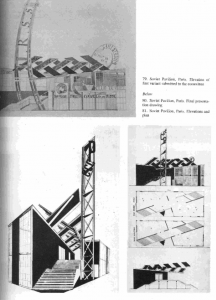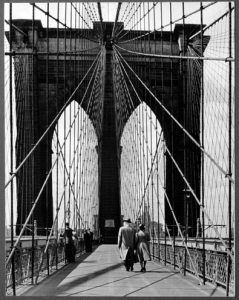How the Phenomenon of Diagonality Changed the Face of Modern Architecture
THE DARING DIAGONAL
CHAPTER ONE
INTRODUCTION
THE THEME
After emerging sporadically over many centuries and in disparate cultures, Diagonality surged onto the world stage at the very end of the 19th century and became what may eventually be regarded as the signature geometry of 20th century art and architecture. [Figure 1.1]
Figure 1.1 Hearst Tower, New York. 2003 Sir Norman Foster, Architect Photo: Joel Levinson
Right angle, curvilinear, and amorphous geometries certainly were utilized during the 20th century, but the use of diagonal relationships dominated the scene and increasingly so as the decades passed. It is curious, however, that the artists, engineers, and architects using diagonals and a host of other angular relationships during this period failed to notice or acknowledge what might be called the underlying morphological web that connected their disparate activities. Setting to one side the well-known monikers associated with many early 20th century art movements such as Cubism, Rayonism, Constructivism, Vorticism, and Art Deco, it is evident that a diagonal motif undeniably links them all. Diagonality also was utilized in fields not traditionally seen as linked and for that reason in particular, it was never viewed as a singular phenomenon.
Diagonality, for many, is an off-putting word, sounding initially more complex and abstruse than it really is. Some people even stumble trying to pronounce the unfamiliar, six syllable word. And yet, once the basic concept is understood, the word Diagonality is comfortably embraced as an on-the-mark, turn-to expression to refer to a design motif that is both pervasive and significant. Countless examples of Diagonality can be discovered around the world in art museums and on street corners once the idea takes hold in the mind and the eye is cued to see. As the German poet, philosopher and scientist Goethe (1749-1832), once observed, “We see what we know.” Based on my understanding of perception and the many conversations with friends and design professionals I’ve had over the years, the obverse is also true: we are blind to things/concepts that have not yet taken residence in the mind. Whether one has learned to see the phenomenon of diagonality in all it’s manifestations, those who have actually employed the diagonal motif, consciously or unconsciously, know it offers a productive and liberating approach to problem solving in form, pattern, and structure.

Fig. 1.2
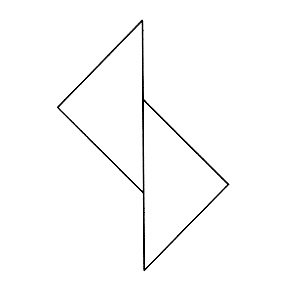
Fig. 1.3
A simple illustration will introduce one of Diagonality’s many modes of expression. Start with the square to the right noticing that all sides are parallel to the sides of this page. Now rotate the square 45 degrees. [Figure 1.2] A line drawn from the top corner to the bottom corner bisects the square and creates two triangles. Now slide the triangles along the bisecting diagonal but keep the two triangles touching. [Figure 1.3] Imagine that this new angular shape with its two projecting acute corners is the footprint of a building. Some modern buildings constructed since the start of the 20th century share elements of this configuration. One example is the triangle-based Church and Center in Hyvinkää, Finland designed in 1959 by architect Aarno Ruussuvuori. [Figure 1.4]
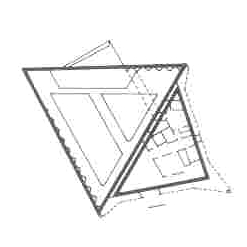
Fig. 1.4 Church and Center in Hyvinkaa, Finland. 1959-1961 Aaron Ruusuvuori, architect P.183. 1959-61 Precedents in Architecture
The two triangles composing the building’s footprint are given pyramidal [pyramid-like] massing, each to a different height, as the structure rises vertically. A further example is the Soviet Pavilion designed in 1925 by the Russian architect Konstantin Melnikov. [Figure 1.5]
Fig.1.5 Konstantin Melnikov. USSR Pavilion. Paris Exposition, France. 1925.
Not only does Melnikov’s plan mirror the diagram, but he also introduces a flight of stairs between the two triangular halves to emphasize the bifurcation and diagonality of the scheme. Angular features of the design, such as the tilted roof panels and the triangulated framing of the sign tower, make this an emblematic project that illustrates the core features of much 20th century Diagonality.
The footprint of most buildings constructed before the 20th century mirrors the square-cornered diagram we started with above. [Figure 1.6] Larger buildings were oftentimes composed of a combination of squares and rectangles.
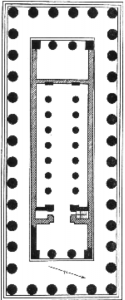
Fig. 1.6 (Designer unknown) Temple of Poseidon. Paestum, Italy. 460 BCE.
Buildings with square corners have a static quality, while modern buildings employing diagonal features are dynamic, providing a sense of fluidity and motion. This book presents the history of this transformation, from the static geometry of the rectangle to the dynamic geometry of the oblique. It is a rich and complex story that begins with the dawn of civilization and involves almost every major period in world history.
As mentioned above, Diagonality permeates design disciplines other than architecture. These include the visual arts, landscape and urban design, product design, and structural engineering. Its history takes us from the familiar geometry of the right angle to a geometry that is more complex and mysterious, and certain many instances, more advantageous. Manifestations of Diagonality appear in the street layout of cities, in the structural framing of bridges and high-rise buildings, in man-made landscapes, and in furniture design. In my treatment of the subject, the connective tissue that unifies seemingly separate and distinct artistic styles and technological developments such as Cubism, Rayonism, Futurism, Art Deco, geodesic domes, space frames (a space frame is a lightweight, truss-like rigid structure usually made of triangulated interlocking steel struts, which in combination can span great distances with great economy of means), and Deconstruction will be studied. This new concept of Diagonality weaves together design trends and developments that in many respects were hitherto regarded as unrelated or, at best, loosely related such as the patterns used in cut glass and the diagonal grids employed by architects such as Frank Lloyd Wright.
The underlying forces that at certain times adopted and nourished the use us of diagonals and at other times created obstacles will be illustrated in the pages that follow. Those positive and negative forces come from fields such as philosophy, mathematics, religion, the mechanics of vision, organic and inorganic structure, and social revolution. The main stage on which the action of this book unfolds, however, is the full blossoming of Diagonality during the 20th century. During this period, global culture gave birth to and, in turn, was profoundly re-shaped by this geometric motif.
To better understand the nature of Diagonality, three distinct terms are defined below: Intentional diagonality; Unintentional diagonality; and the Phenomenon of Diagonality.
INTENTIONAL USE OF DIAGONALS
Diagonality involves the deliberate and intentional use of oblique lines, angular shapes, and crystalline forms. Viewed otherwise, Diagonality does not occur when its employment is simply a passive act.
A real life example will help clarify the matter. As I mentioned in the Preface, when I and fellow architecture students at the University of Pennsylvania (1957-1963) were designing buildings in response to class assignments, it was clear that the age-old tradition of using right-angle geometry was giving way to a new angular motif. At the time, wedge-shaped volumes were either added to or subtracted from our otherwise rectangular masses. These design gestures were referred to as Zaps and Zoots. These same very deliberate design transformations also began to appear in architectural journals. Some years later, when I mentioned Zaps and Zoots to fellow professionals my age, they spoke of the Zaps and Zoots era as a fad. This retrospective observation strongly suggests the architects were aware that what they had been doing in school was intentional; a deliberate act of copying or emulating a particular motif.
Terms such as deliberate, intentional, and passive are fraught with philosophical and neurological questions and uncertainties. While this book cannot deal in depth with definitions and processes that are still being debated by both philosophers and neuroscientists, the issues also cannot be dismissed or avoided because they go to the heart of the Phenomenon of Diagonality.
Diagonality occurs when oblique relationships are utilized from the outset in a deliberate aesthetic act or when oblique relationships are employed because they spring subconsciously from the deep-rooted aesthetic zeitgeist of an era, such as occurred in the 20th century and continues to the present. During the zoot and zap phase of Diagonality from roughly 1960 to 1970, use of diagonals in architecture was deemed a fad or a craze. However, as time passed and the use of diagonals in architecture became ubiquitous and ongoing, what had been viewed as a fad was clearly now a trend. But in light of Diagonality’s continuing usage and global acceptance, use of the term Phenomenon of Diagonality seems fully justified and validated.
UNINTENTIONAL USE OF DIAGONALS
When a builder or architect needs to alter a an architectural plan in order to accommodate a pre-existing condition—such as when a road cuts across a corner of building site or a rock outcropping slants across one side of the property—the architectural response is to clip off a corner of the plan. The resulting scheme is not an expression of Diagonality as here defined. It is a circumstance-required adjustment to an otherwise right-angle plan than involves the use of a diagonal, but it is not an intentional use of Diagonality. The resulting design with the clipped corner never becomes a precursor; it is not picked up by another individual or another generation and replicated as a useful model.
In the fine arts, diagonal relationships in a work of art are not regarded as an expression of Diagonality (note the capitalization) unless those relationships were intended by the artist in a deliberate, conscious way for its own sake. This subject is complicated by the fact that painters, sculptors and photographers oftentimes follow a rule of thumb called the Diagonal Method.
For example, the ancient Greek sculpture called the Slave, presents an array of folds in the slave’s chiton. These folds are not rendered as soft curves but rather as fan-like arrays of angular elements. It is presumed that the sculptor did not have in mind to create a display of diagonality in an intentional manner but rather the final work by chance has an aesthetic quality that can be referred to as diagonality as spelled with a lower case d.
THE PHENOMENON OF DIAGONALITY
Diagonality with a lower d refers both to a quality of design and, from a societal perspective, to a cultural phenomenon. The quality aspect of diagonality is easily illustrated. In architecture, for instance, if the floor plan, cross-section, side elevation or structural design of a particular building has many acute and/or obtuse angles and few right angles, one can say that the plan exhibits the quality of diagonality. This is boldly evident in Daniel Libeskind’s Jewish Museum of 1989. [Figure 1.7] His building is obviously out-of-square and therefore, with its unavoidable attribute of dynamism, exhibits the quality I call diagonality. This particular example also happens to represent the Phenomenon of Diagonality, explained below.
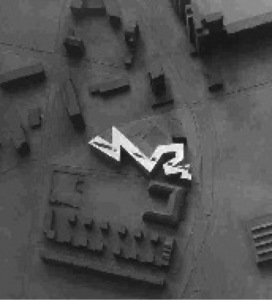
Fig. 1.7 Daniel Libeskind’s Jewish Museum of 1989, Berlin, Germany
My goal is to integrate these disparate pieces through a common philosophical and morphological foundation—such that previously regarded isolated movements will now be seen as a justifiably interconnected whole.
On the other hand, the Phenomenon aspect of Diagonality is, for several reasons, more difficult to communicate. To begin, Diagonality never became an art movement as, for example, did Cubism in the first quarter of the 20th century. There was never a group of artists, or architects, or town planners that called themselves Diagonalists in the same way that some painters were referred to as Cubists. Nor was there ever a group of designers who associated with others of like interest and collectively explored a design theme in a way that might have been called Diagonalism or Diagonality. Also absent were art historians and design critics who might have labeled a group of designers as Diagonalists, or wrote about the motif in a broad thematic manner. Curious is the fact that there has been an absence of manifestos written by proponents of Diagonality. This was not the case with at least three other early 20th century movements—Futurism, Rayonism and Constructivism. There is a barely-qualifying (due to its brevity) exception to the absence of a manifesto that advocates, by name, the notion of Diagonality: and that is the short, impassioned article entitled Michelangelo’s Fortification drawings: A Study in the Reflex Diagonal by Vincent Scully, Jr. This article appeared in the first issue of Perspecta (1952), The Yale Architectural Journal. [Figure 1.8] Scully, enthralled by the energy and dynamism of the diagonal, wrote in his typically passionate style: a missing confirmational link Michelangelo was an architect, artist, sculptor, and his drawings are all embued with this motif.

Fig. 1.8 Michelangelo. Fortification Drawing. Cover, Perspecta 1, The Yale Architectural Journal. 1952.
“The power of the sensuously felt diagonal to destroy boundaries and to create reflex makes them (Michelangelo’s Fortification drawings) [Figure 1.9] live and grow as spatial forms. In this they are similar, for example, to the best of Wright’s diagonally reflex plans… Consequently, if much of the key to architectural design lies in a sensitivity to rectangular, curvilinear and diagonal rhythms, these drawings are important to us, because they demonstrate an intense investigation into the nature of the diagonal carried on under pressure by an architect who was [also] a sculptor and painter…” (Scully 1952)
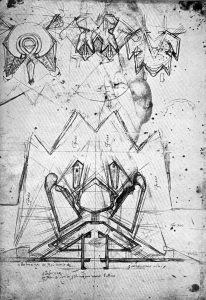
Fig. 1.9 Michaelangelo. Fortification Drawing. Perspecta 1, The Yale Architectural Journal. 1952
The Phenomenon of Diagonality refers specifically to the global, 20th century design development characterized by the deliberate, intentional, oftentimes asymmetrical use of the diagonal motif in architecture and in many other design disciplines. It also applies to the continuing use of diagonals in the 21st century.
It is prudent at this juncture to briefly comment on my use of the word diagonality. I did not coin the term; it’s been in use for several centuries. The mathematical use of the word, of which most people are familiar, relates to the straight line that connects two non-adjacent angles of a polygon (a shape drawn flat in two dimensions, such as a square), or a line connecting the vertices in a polyhedron (a three dimensional form, such as a cube). The term has been used occasionally in art history referring to the quality of diagonality as described in this writing. Although there seems to be no precedent for using the term to apply to what I call the Phenomenon of Diagonality in the 20th century, those familiar with my writings on the subject deem the term appropriate.
A MOVEMENT ABSENT A MANIFESTO
Despite Scully’s obvious enthusiasm for the diagonal, his role as an academic and critic, precluded him drafting a passionate ‘call to action.’ Scully’s article was part art history and part manifesto, albeit a manifesto constrained significantly by the academic code of decorum. Nevertheless, his unabashed enthusiasm for diagonality was evident throughout this article and his other writings. It seems certain that Scully, had he been an artist himself, would have been the one to write the compelling exhortation that would likely have codified the notion of Diagonality for centuries to come. Scully may have left that task to his friend Robert Venturi, a world-renowned Philadelphia architect with a strong iconoclastic bent. Venturi, in his influential book, Complexity and Contradiction in Architecture (Venturi, 1966), wrote inventively about diagonality among other design motifs, along with a host of other fresh perspectives on architecture. Although his book was a manifesto of sorts (he himself referred to it as a gentle manifesto), it was not a document solely devoted to this theme and therefore is not the focused declaration of principles that would likely have made Diagonality common parlance in today’s design communities. Venturi’s words and images no doubt helped to bring this motif to somewhat greater prominence and use.
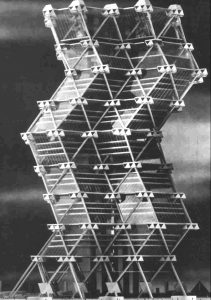
Fig. 1.10 Louis I. Kahn and Anne Tyng. Philadelphia City Hall Study. Philadelphia, Pennsylvania. 1957.
“In Modern architecture we have operated too long under the restrictions of unbending rectangular forms supposed to have grown out of the technical requirements of the [structural] frame and the mass-produced curtain wall. In contrasting Mies’ and Johnson’s Seagram Building with Kahn’s project for an office tower in Philadelphia it can be seen that Mies and Johnson reject all contradictions of diagonal wind-bracing in favor of an expression of a rectilinear frame. [Figure 1.10] Kahn once said that the Seagram building was like a beautiful lady with hidden corsets. Kahn, in contrast expresses the wind-bracing—but at the expense of such vertical elements as the elevator and, indeed of the spaces for people.” (Venturi 1966)
DIAGONALITY — A TOPIC WITH SCANT ACADEMIC HISTORY
There are other art historians, in addition to Scully, who have written about the diagonal. One example is James S. Ackerman in his book, The Architecture of Michelangelo (Ackerman 1961). Two other books more focused on diagonality in modern architecture are Anthony Alofsin’s treatise on an important transitional period in Frank Lloyd Wright’s life, titled Frank Lloyd Wright: The Lost Years 1910-1922 (Alofsin 1993) and David DeLong’s excellent book on the unique and quirky architecture of Bruce Goff (De Long 1988). In The Lost Years, an entire chapter is devoted to diagonality as a quality of Wright’s design. In Chapter 9, A Lesson in Diagonality, Alofsin lays out the subject with these words:
“After 1910, as Wright moved forward with his experiments in primitivism and exploration of ornament, a new force developed in his architecture: a dynamic diagonality that allowed for fresh asymmetrical compositions.
“The square, its rotation, and its translation into dynamic compositions became a means of artistic expression he pursued at the Imperial Hotel throughout the decade. Wright began to turn, to implode, and, ultimately, to explode the square.”(Alofsin 1993) [Figure 1.11]

Fig. 1.11 Frank Lloyd Wright. Design for stone relief in Imperial Hotel. Japan. 1916-22. (p.216. Alofsin)
De Long describes Bruce Goff’s use of non-orthogonal elements in his discussion of the architect’s initial design for a house for one his major patrons:
“Goff responded by presenting an extraordinary design, one that had a spatial freedom expressed by a composition of nonparallel planes and in which regular geometric shapes of any sort were avoided. Writing of the design, Goff said, “Sometimes we feel the need to go to the other extreme and develop a very free approach—try to emancipate ourselves from geometry, you might say.” Discussing the quality of space that would result, he added, “Now that it is possible to use geometry so freely our spaces may become more active…more dynamic.””(De Long 1988) [Figure 1.12]
These books are among the few written in the English language in which diagonality as a geometric motif is discussed at length.

Fig. 1.12 Bruce Goff. Joe Price studio and addition, final plan as built. Bartlesville, Oklahoma. 1966.
DIAGONALITY — ANTECEDENTS AND PRECURSORS
To best understand the roots of Diagonality, it is important to distinguish between Diagonality’s antecedents and precursors. To understand antecedents, consider this hypothetical example: imagine that architects in ancient Egypt had reason to create a triangular rooms amid a floor plan consisting of otherwise rectangular rooms. The triangular room should be regarded as an antecedent if, over time, it is later rediscovered by architects, for instance in the 20th century, and is reinterpreted and the concept then put to use.
If, however, the original triangular room in ancient Egypt immediately starts a trend in that culture involving the design of triangular rooms in other Egyptian buildings, then the first triangular room would be described as the precursor of those that followed because it is ‘built upon’ by subsequent practitioners. In summary, if replications of a new approach occur soon after the original, then the original should be regarded as the precursor, not the antecedent.
EXAMPLES OF DIAGONALITY IN THE 20TH CENTURY
A fine example of 20th century Diagonality is I. M. Pei’s East Wing of the National Gallery in Washington, DC (designed in 1968 and opened to the public a decade later). In dramatic contrast to the original wing of the building, a classically designed, orthogonal structure, Pei’s addition is an angular composition conforming to and echoing its site’s triangular shape on the Mall. [Figure 1.13] The acute-angle geometry of the site results in some walls of the building terminating in surprisingly sharp angles. Visitors to the buildings have been so arrested and amazed by the sharpness of the stone corner (see upper left part of the plan) that the knife-edge is marred by a flare of hand oils. It was the disbelief in the sharpness of the corner than demanded it be touched to be believed. It is logical that this building’s geometric motif connected to a revolution that embraced a new geometry because it was during this time that much of Washington, D.C. was erupting in political upheaval. Protests against the war in Vietnam, for civil rights, and for freer lifestyles were causing turmoil throughout the nation. In researching Diagonality, I have uncovered what I believe to be a correlation linking times of social upheaval with periods of pronounced diagonal expression. The Russian Revolution of 1917, for instance, occurred around the time many Russian artistic movements appeared employing diagonals as their dominant geometry. [Figure 1.14]
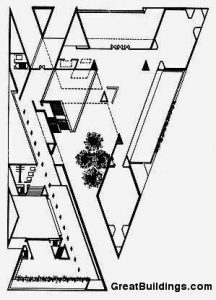
Fig. 1.13 East Wing of National Gallery of Art. Washington DC. 1968, I.M. Pei, Architect.

Fig. 1.14 Russian Avant Garde art by El Lissitsky. 1919.
Another example is the industrial revolution that occurred in the middle of the twenty-year period during which octagon-shaped buildings were popular in the United States. This is not to say that the industrial revolution caused the emergence of octagon-shaped buildings, or vice versa, but simply to suggest that a mood of revolutionary change was in the air and this desire for change on various fronts became expressed in the social revolution and in the promotion and adoption of a new attitude toward the geometry of buildings. If connective tissue between the industrial revolution, the emotions of the time, and the revitalized octagonal geometry of buildings can be confirmed with reasonable certainty, this intriguing social/psychological correspondence may offer future scholars a potentially rich subject for investigation.
The Vietnam Veterans Memorial designed by Maya Lin, also built on the Mall in Washington, DC, is another more poetic example of the diagonal motif in 20th century architecture. The Memorial’s footprint is a V cut into the level grass plane of the Mall. The legs of the V point toward the Washington Monument in one direction and the Lincoln Memorial in the other. [Figures Figure 1.15]
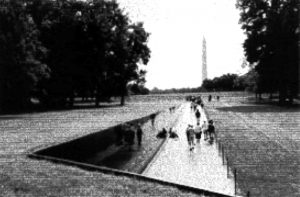
Fig. 1.15 Vietnam Veteran’s Memorial. Washington DC. 1983. Maya Lin, architect.
It is reasonable to assume that the V is a reference to Vietnam and the Vietnam War, but also to the veterans who lost their lives. Visitors follow a ramp that slopes down along one leg of the V then rises back to the plane of the Mall. At the point where the black polished wall changes direction, one begins to rise out of the shadows of the earth and into the brighter light of day and vistas of hope. This excellent, understated memorial reflects the designer’s keen intelligence and poetic use of the diagonal motif.
Ramps were first used thousands of years ago in the ancient civilizations of Egypt and Mesopotamia and are the antecedents of 20th century ramps. In those ancient cultures, the ramp was a powerful symbol of ascension, procession, and royal presence. In Queen Hatshepsut’s famous tomb at Dier el-Bahari on the west bank of the Nile a series of ramps rise from one terrace to the next with pharonic authority. [Figure 1.16] Hatshepsut’s ramps rose in reverence and majesty, while in our time, Maya Lin’s ramp descends in tragedy, compromised honor, and disgrace.

Fig.1.16 Senmut. Queen Hatshepsut’s Mortuary Temple, Deir el Bahari. Egypt. 1500 BCE.
It is interesting that the East Wing of the National Gallery and the Vietnam Veterans Memorial were constructed in a city whose very street layout was a stepping-stone to 20th century Diagonality. Around 1791, a Frenchman, Pierre L’Enfant, designed the city based in part on Baroque planning tenets. [Figure 1.17] Other urban and landscape plans shaped by and /or characterized by bold diagonals are described and analyzed in later chapters, including the highly diagonalized layout of Versailles executed in the middle of the seventeenth century. [Figure 1.18]

Fig. 1.17 Conceptual study; Original competition presentation drawing. Washington DC. 1791. Pierre l’Enfant.

Fig. 1.18 Versailles. France. 1660. Andre le Notre, landscape architect.
Throughout the 20th century the diagonal was employed extensively in the fine arts. It was oftentimes used to express movement and temporality as in Marcel Duchamp’s “Nude Descending a Staircase” with its cascade of fan-shaped forms. [Figure 1.19] Another example, a composition of crisscrossing black stripes by abstract expressionist Franz Kline, expresses a different quality of modern life. His rough-edged slashes convey a mood of change and unrest, qualities that portend societal developments that began to unfold in the decade just following Kline’s experiments with this motif.
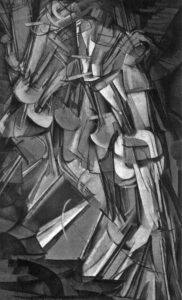
Fig. 1.19 Nude Descending a Staircase, No.2. 1912. Marcel Duchamp.
THE PSYCHOLOGY OF DIAGONALITY
The subject of Diagonality is intimately involved with the working of the human mind and the mechanics of vision. Vertical and horizontal axes, for example, are spatial orientations etched in our consciousness like crosshairs. These orientations are reinforced by constant reminders such as the vertical axes of trees and columns and the always-level line of the horizon at sea. The angled line, however, has historically been viewed as off-balance. Objects and structures at an angle frequently appear as though they are about to collapse. The unpredictable quality associated with outward leaning structures was anathema to early civilizations that valued permanence and stability.
Oblique relationships have been the subject of several interesting scientific investigations over the last hundred years, particularly those related to visual perception and cognition. David Olson, a Canadian researcher, advanced the thesis that children find it difficult to reliably replicate the orientation of a diagonal line before the age of seven. (Olson, D. R. (1970) Cognitive development: The child’s acquisition of diagonality. New York: Academic Press ) His study also reflects the fact that some people have trouble with the concept of diagonals even as adults, far more so than with vertical and horizontal orientations. Another researcher, Herman Witkin, investigating the perception of verticality, found connections between how individuals perceive what is upright and how they function in society. Connections between Diagonality, visual perception and emotions add a rich dimension to the study of Diagonality.
It is hard to resist the conclusion that when the subconscious taboos associated with the diagonal were finally swept aside, Diagonality penetrated the world’s subconscious not as a word but as a yet unnamed way of seeing. Angularity, for some, became a fundamental component of their psychological constitution. Claiming that Diagonality penetrated the world’s subconscious at the start of the 20th century does not mean there were no earlier periods in history that exhibited nascent expressions of this motif. The walkways and roadways at Versailles, as mentioned earlier, are a splendid example of what one must assume was an intentional use of diagonals, not just a passive circumstantial happenstance. The diagonal allées were deliberate, artful features in the manipulation of a grand landscape for the aggrandizement of royalty.
What distinguishes Diagonality in the 20th century from antecedents in preceding centuries is that 20th century diagonality permeated all design disciplines, not just one or two. Hard to explain, however, is the fact that this motif has been wholeheartedly embraced without designers having had a commonly accepted term to refer to the model, to this pervasive motif—until now.

Fig, 1.20 Speaker’s Platform. 1920. El Lissitzky.
It was, however, the 19th century that truly set the stage for the explosion of Diagonality during the 20th century. Cast-iron structural frames with diagonal bracing were used to frame vast exhibition halls. Triangulated steel colliery towers rose out of the landscape, foreshadowing and possibly inspiring the angled commemorative towers and speakers’ platforms of the Russian Avant-garde. [Figure 1.20] Iron and steel were also used to create diagonally braced bridge trusses and suspension structures such as the Brooklyn Bridge. When Lewis Mumford, a 20th century social and architectural historian, first saw the angled suspension cables slanting off the massive Gothic-styled stone towers of the then ‘new’ Brooklyn Bridge, he sensed ‘the dawning of a new age.’ [Figure 1.21] These examples all speak to the technological advances over the last 150 years that made triangulated structures more feasible and affordable.
Fig. 1.21 The Brooklyn Bridge New York. 1883
SUMMARY
During the five decades during which I studied this subject, I wondered whether I was imagining a phenomenon that did not really exist. James S. Ackerman, in his book about Mannerism and Michelangelo states, “I believe that while the concept of Diagonality can facilitate criticism, it can also obstruct our perception by urging us to find in the work of art what our definition of it states we must find,” (19). Ackerman concludes his commentary by saying, “In short, my approach has been guided by the conviction that generalization on style should emerge from, rather than guide the examination of works of art themselves.”
The chapters of this book that follow are organized chronologically for the most part but license is taken within each chapter to arrange the material thematically. In this respect the significance of an entry takes priority over its exact place in time. Each entry, whether building, city, artwork, or treatise, is based either upon my personal examination of the work or my best interpretation of sometimes conflicting historical information.
The book should also be regarded as a celebration of a design motif that has been little understood but widely used for well-over a century. I can remember my excitement when, driving in Madrid in 1998, I saw two twin office towers leaning over the roadway. The silver, black, and red graphics of the design, and the leaning masses of the towers themselves seemed to boldly proclaim a new era in design. The theory of Diagonality was dramatically confirmed; the Signature Geometry of the 20th century was manifest. [Figure 1.23] Diagonality has provided our modern civilization with a liberating new perspective that has served as a catalyst for seeing all manner of things from a new vantage. This is a gift to mankind: a powerful new design tool that continues to unleash a host of exceptionally free forms of expression. It is my informed hunch that one day Diagonality will be seen as a newly empowering design modality close to or equal to the transforming geometry provided centuries earlier by the arch, the dome, the barrel vault, and the flying buttress.
Joel Levinson

